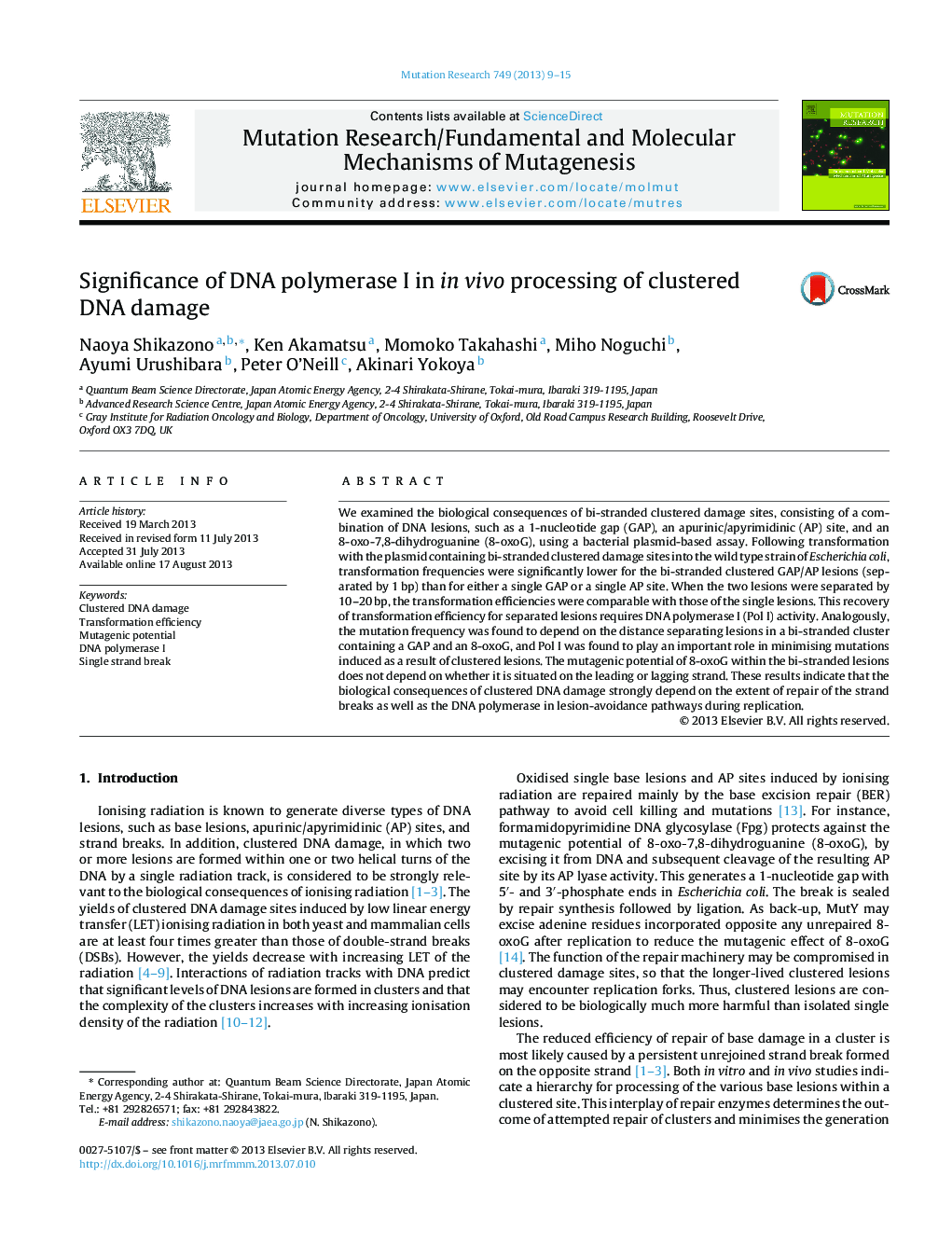| Article ID | Journal | Published Year | Pages | File Type |
|---|---|---|---|---|
| 2146376 | Mutation Research/Fundamental and Molecular Mechanisms of Mutagenesis | 2013 | 7 Pages |
•We examined the role of Pol I in processing clustered damage sites in vivo.•Efficient transformation of bi-stranded GAP/AP cluster requires Pol I activity.•Pol I plays an important role in minimising clustered lesion-induced mutations.•The biological consequences depend on the extent of repair of the strand breaks.•Pol I may be required in a lesion-avoidance pathway during replication.
We examined the biological consequences of bi-stranded clustered damage sites, consisting of a combination of DNA lesions, such as a 1-nucleotide gap (GAP), an apurinic/apyrimidinic (AP) site, and an 8-oxo-7,8-dihydroguanine (8-oxoG), using a bacterial plasmid-based assay. Following transformation with the plasmid containing bi-stranded clustered damage sites into the wild type strain of Escherichia coli, transformation frequencies were significantly lower for the bi-stranded clustered GAP/AP lesions (separated by 1 bp) than for either a single GAP or a single AP site. When the two lesions were separated by 10–20 bp, the transformation efficiencies were comparable with those of the single lesions. This recovery of transformation efficiency for separated lesions requires DNA polymerase I (Pol I) activity. Analogously, the mutation frequency was found to depend on the distance separating lesions in a bi-stranded cluster containing a GAP and an 8-oxoG, and Pol I was found to play an important role in minimising mutations induced as a result of clustered lesions. The mutagenic potential of 8-oxoG within the bi-stranded lesions does not depend on whether it is situated on the leading or lagging strand. These results indicate that the biological consequences of clustered DNA damage strongly depend on the extent of repair of the strand breaks as well as the DNA polymerase in lesion-avoidance pathways during replication.
